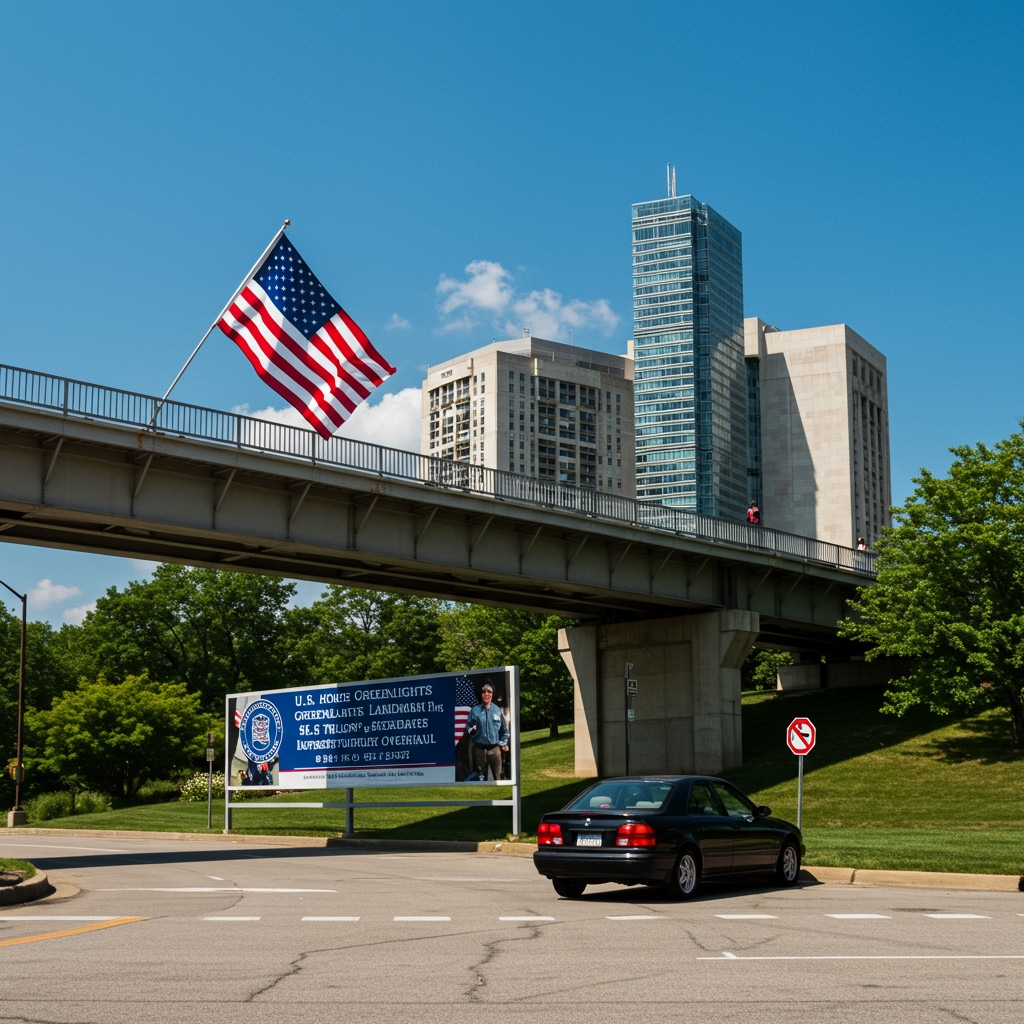Introduction
The U.S. House of Representatives achieved a significant legislative milestone late Sunday, April 27, 2025, by narrowly passing a comprehensive infrastructure package aimed at modernizing America’s aging foundational systems. Designated H.R. 4567, formally known as the National Infrastructure Revitalization Act of 2025, the sweeping bill proposes an allocation of approximately $1.5 trillion over the next decade. The critical vote, which occurred after intense debate and negotiation, concluded with a margin of 218-212, reflecting the challenging path the legislation navigated through the lower chamber. This landmark bill represents a major legislative priority for the current administration and House leadership, poised to impact transportation, digital connectivity, and energy infrastructure across the nation.
Core Pillars of the Legislation
The National Infrastructure Revitalization Act of 2025 is designed as a multifaceted investment plan addressing a wide array of critical needs. A substantial portion of the $1.5 trillion funding is earmarked for essential upgrades to the nation’s transportation networks. This includes significant investments in repairing and rebuilding crumbling roads and structurally deficient bridges, as well as enhancing and expanding public transit systems in urban and rural areas alike. The goal is to improve safety, reduce congestion, and stimulate economic activity by ensuring the efficient movement of goods and people. Beyond traditional transportation, the bill makes a robust commitment to closing the digital divide. It includes substantial funding specifically dedicated to expanding broadband internet access nationwide, aiming to bring high-speed connectivity to underserved communities, thereby supporting remote work, education, and access to essential services.
Crucially, the legislation also incorporates considerable investments aimed at modernizing the national energy grid. This modernization is not merely about reliability; it’s strategically designed to support and facilitate the integration of renewable sources into the energy supply. This element of the bill aligns directly with a key goal of President Ellis’s administration, which has consistently emphasized the transition to cleaner energy as both an environmental imperative and an economic opportunity. The comprehensive nature of these investments signals a concerted effort to build infrastructure that is not only functional for today but also resilient and sustainable for the future, addressing needs from coast to coast and encompassing various sectors vital to national prosperity and security.
The Vote: A Narrow Victory
The passage of H.R. 4567 in the House was anything but assured, highlighted by the extremely tight vote count of 218-212. This narrow margin underscores the significant political divides and complex negotiations that characterized the bill’s journey through the House of Representatives. Securing the necessary votes required intensive lobbying and outreach efforts from House leadership. For House Speaker Ramirez, shepherding this legislation to passage was a paramount objective, reflective of its status as a major legislative priority for her tenure. The close vote indicates that while there was sufficient support to advance the bill, it did not garner overwhelming bipartisan consensus, suggesting potential challenges or differing viewpoints regarding its scope, cost, or specific provisions among members of Congress. The delicate balance struck to achieve passage reflects the realities of governing in a closely divided political environment, where every vote counts and legislative victories, especially on such large-scale spending packages, often come down to a handful of decisive ballots.
Forward to the Senate
With its passage through the House of Representatives secured, the National Infrastructure Revitalization Act of 2025 now advances to the Senate for further consideration. The journey through the Senate is expected to involve rigorous debate and potential amendments, as senators assess the bill’s provisions and fiscal implications from their own perspectives and priorities. While the bill represents a key goal for President Ellis’s administration and is backed by House Speaker Ramirez, its reception in the Senate will be crucial to its ultimate fate. The Senate, with its different procedural rules and political dynamics, may choose to modify aspects of the House-passed bill. Negotiations between the two chambers will likely be necessary if differences arise, potentially leading to a conference committee to reconcile varying versions before a final bill can be sent to the President’s desk for signature. The timeline and specific outcome in the Senate remain subject to the legislative process, but the House passage represents a critical step forward for the infrastructure investment agenda.
Long-Term Vision and Impact
The commitment of approximately $1.5 trillion over ten years outlined in H.R. 4567 reflects a strategic vision for investing in the long-term health and competitiveness of the United States. Supporters argue that modernizing infrastructure is essential for economic growth, job creation, and improving the quality of life for Americans. The investments in roads, bridges, and public transit aim to ease commutes, lower transportation costs, and facilitate commerce. Expanding broadband access is seen as fundamental to ensuring equitable participation in the digital economy and accessing essential services in the 21st century. The focus on the energy grid and renewable sources is intended to bolster energy security, mitigate climate change impacts, and position the U.S. as a leader in clean energy technology. While the costs are significant, proponents contend that the long-term benefits, including increased productivity, reduced infrastructure failures, and environmental improvements, far outweigh the expenditures. The ten-year timeframe provides a degree of certainty for planning and executing these complex projects nationwide.
Conclusion
The narrow passage of the National Infrastructure Revitalization Act of 2025, H.R. 4567, by the U.S. House of Representatives on Sunday, April 27, 2025, marks a pivotal moment in the ongoing effort to revitalize America’s infrastructure. By approving the approximately $1.5 trillion package covering critical upgrades to transportation, broadband, and the energy grid, including support for renewable sources, the House has advanced a key legislative priority of President Ellis’s administration and House Speaker Ramirez. The 218-212 vote highlights the political complexities surrounding such large-scale investments. The legislation now moves to the Senate, where it will face further scrutiny and deliberation. The outcome of the Senate’s consideration will determine whether this ambitious plan for nationwide infrastructure modernization becomes law, shaping the future of American connectivity, transportation, and energy for years to come.





